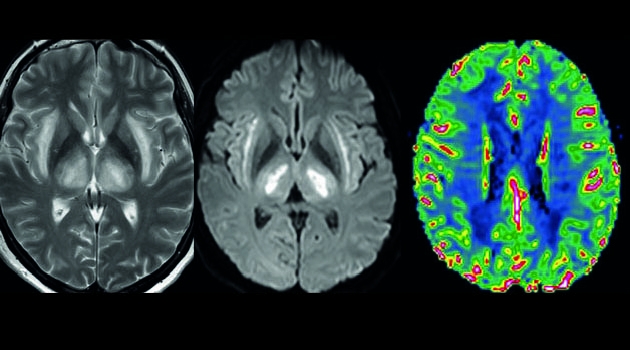Brain damage can be detected in COVID-19 patients
Many COVID-19 patients have neurological symptoms, but routine tests usually do not show any effect on the brain. In a study at Uppsala University, researchers have discovered brain damage in patients by analysing samples from their spinal fluid.
University Hospital and researcher at Uppsala
University.
“These are in-patients being cared for at Uppsala University Hospital with mild or severe neurological symptoms. We are looking at how to diagnose this, provide a prognosis for these patients and monitor the long-term effects,” says Elham Rostami, a neurosurgeon at Uppsala University Hospital and researcher at Uppsala University.
She and her team presented their research on COVID-19 and damage to nerve cells in the brain early in the pandemic. The COVID-19 Neuro study was initiated in April 2020 in collaboration with Karolinska Institutet, Stockholm University, the University of Gothenburg and several teams at Uppsala University. The European Journal of Neurology recently published a substudy of 19 patients.
What neurological symptoms do the patients have?
“Everything from headaches and loss of smell and taste to more severe neurological symptoms, such as losing consciousness or suffering brain damage.”
How will you follow up on them?
“The patients will be followed up annually. We conduct both a clinical examination and various tests of cognitive ability, such as difficulty concentrating, memory difficulties and fatigue. In some cases, we also follow up with an MRI. A select few will undergo PET scans.”
So this is largely concerned with detecting damage to the brain?
“Yes. When patients have symptoms and undergo lumbar puncture, we do not see any major deviations in the usual routine tests. For research purposes, we have looked for brain injury markers that have been used in concussions and skull injuries. We also look at antibodies in the spinal fluid and how that might correlate with acute and residual symptoms.”
In the spinal fluid, you can see proteins that are secreted when brain damage has occurred. Can this be used in health care?
“For some diagnoses, these markers are already used, but for COVID-19, our team and maybe a few others are the only ones in the world that have looked at this. We test all our patients when we take spinal cord samples. We were one of the first to report that we detected this in the spinal fluid and among the first to report a severe encephalitis case (inflammation of the brain) as a result of COVID-19. As more time passes, we will see more studies on this, especially on those with residual neurological symptoms.”
Why does COVID-19 cause certain neurological injuries?
“There currently are various theories, and it probably has to do with different groups of patients. One alternative that has been discussed and observed in animal experiments is a direct attack on the brain cells by the virus, but if that mechanism occurs in humans, it probably involves an extremely small group of patients. In some other cases, we suspect an autoimmune reaction occurs when the disease attacks the brain. Then there is a group with neurological symptoms resulting from strokes and blood clots. The more we learn about how the virus attacks the nervous system, the better we will become at diagnoses and prognoses when we see this in health care.”
How can this be treated?
“In the severe cases, we have treated the patients with plasmapheresis in Uppsala, and in the few cases in question, this has gone very well. But larger studies are needed, where we can evaluate the real results of the treatment, which groups should receive it and when it should begin.”
What research remains to be done in this area?
“There is so much to look at. For example, why do some suffer very severe neurological damage and severe residual symptoms while others lack even common cold symptoms. There is also a question of the socio-economic effects. Some people who are totally affected by their symptoms cannot go back to work, although they have been very active in the past.”
“For both patients and the health care system, it is very important to be able to detect effects on the nervous system that are directly linked to COVID-19 through blood tests or spinal cord tests, for example. Then patients can feel validated and more easily deal with their situation, while the health care system can find ways to respond and possibly treat this.”
Annica Hulth

